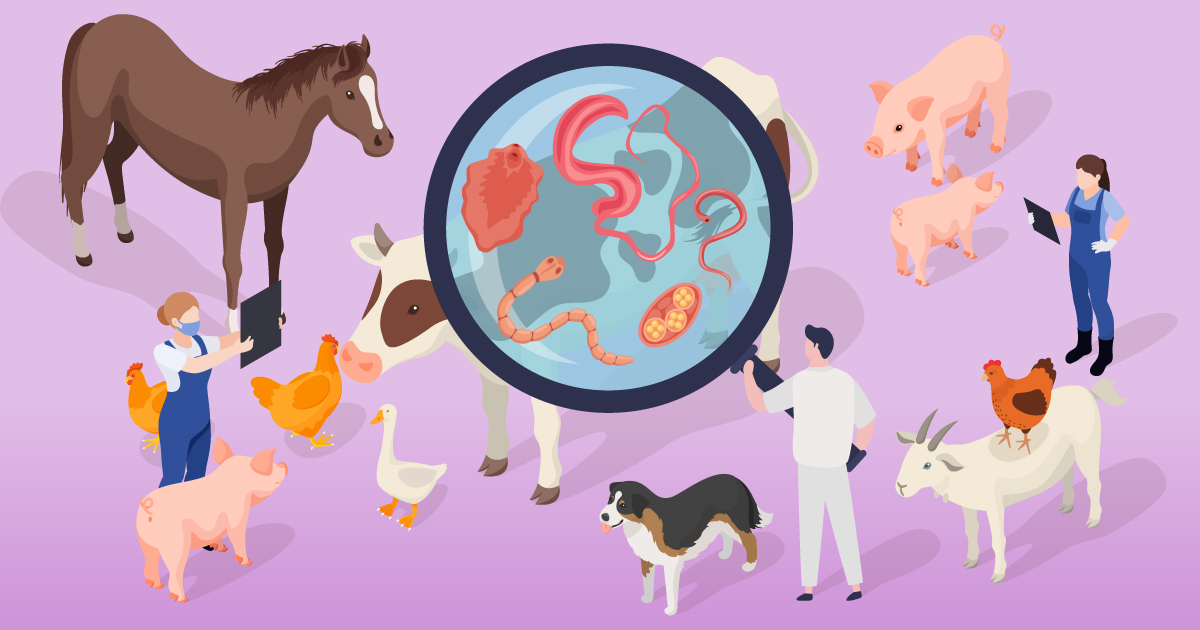Detection of Parasitic Diseases in Livestock
A special issue of Veterinary Sciences (ISSN 2306-7381). This special issue belongs to the section "Veterinary Microbiology, Parasitology and Immunology".
Deadline for manuscript submissions: 20 August 2025 | Viewed by 10846

Special Issue Editors
Interests: Neospora caninum; Toxoplasma gondii; protozoology
Interests: antiparasitic chemotherapy; parasitic resistance; endoparasites; helmintology; GIN—Gastrintestinal nematodes—Ruminants, equines, dogs and cats; haemonchus contortus; ectoparasites; ticks—rhipicephalus microplus, rhipicephalus sanguineus, amblyomma sculptum and dermacentor nitens; flies—horn fly, cattle grub, screwworm fly and stable fly; flea—Ctenocephalides spp.
Special Issue Information
Dear Colleagues,
Parasitic diseases of livestock are caused by different agents, including ecto- and endoparasites, hemoparasites, and other protozoans. They can cause important economic losses to animal production, and some have zoonotic potential. In recent years, the detection of parasites in livestock has improved due to the development of laboratory techniques for parasite detection with a high sensitivity and specificity.
This Special Issue aims to collect papers on detecting parasitic infections in livestock, including molecular, serological, and parasitological detection in different regions. Furthermore, this Special Issue will highlight the importance of parasitic diseases in different countries, contributing to developing specific control measures.
Prof. Dr. Luiz Daniel De Barros
Dr. Gustavo Felippelli
Dr. Fernando de Souza Rodrigues
Guest Editors
Manuscript Submission Information
Manuscripts should be submitted online at www.mdpi.com by registering and logging in to this website. Once you are registered, click here to go to the submission form. Manuscripts can be submitted until the deadline. All submissions that pass pre-check are peer-reviewed. Accepted papers will be published continuously in the journal (as soon as accepted) and will be listed together on the special issue website. Research articles, review articles as well as short communications are invited. For planned papers, a title and short abstract (about 100 words) can be sent to the Editorial Office for announcement on this website.
Submitted manuscripts should not have been published previously, nor be under consideration for publication elsewhere (except conference proceedings papers). All manuscripts are thoroughly refereed through a single-blind peer-review process. A guide for authors and other relevant information for submission of manuscripts is available on the Instructions for Authors page. Veterinary Sciences is an international peer-reviewed open access monthly journal published by MDPI.
Please visit the Instructions for Authors page before submitting a manuscript. The Article Processing Charge (APC) for publication in this open access journal is 2100 CHF (Swiss Francs). Submitted papers should be well formatted and use good English. Authors may use MDPI's English editing service prior to publication or during author revisions.
Keywords
- molecular detection
- serological detection
- epidemiology
Benefits of Publishing in a Special Issue
- Ease of navigation: Grouping papers by topic helps scholars navigate broad scope journals more efficiently.
- Greater discoverability: Special Issues support the reach and impact of scientific research. Articles in Special Issues are more discoverable and cited more frequently.
- Expansion of research network: Special Issues facilitate connections among authors, fostering scientific collaborations.
- External promotion: Articles in Special Issues are often promoted through the journal's social media, increasing their visibility.
- e-Book format: Special Issues with more than 10 articles can be published as dedicated e-books, ensuring wide and rapid dissemination.
Further information on MDPI's Special Issue policies can be found here.








